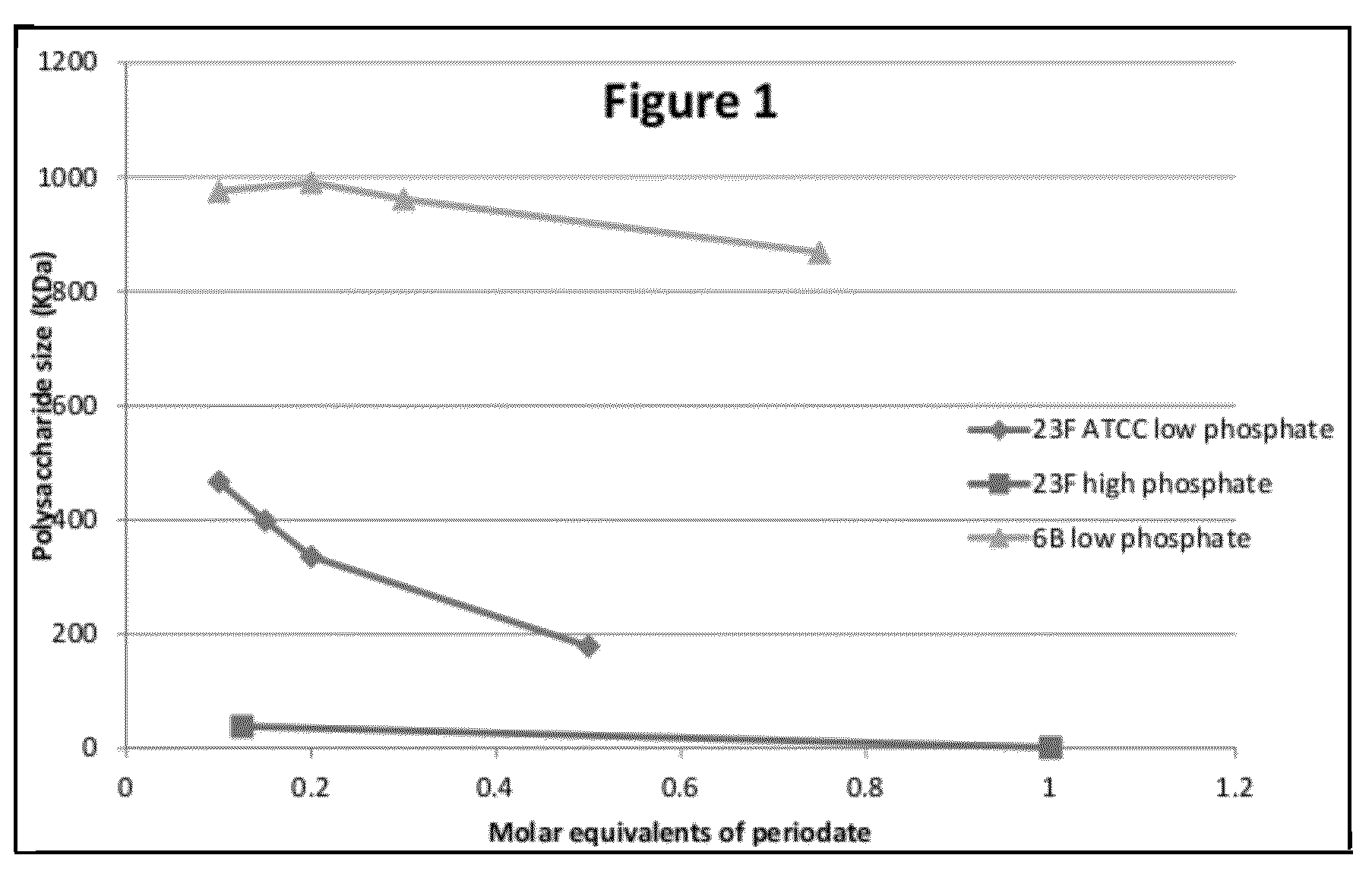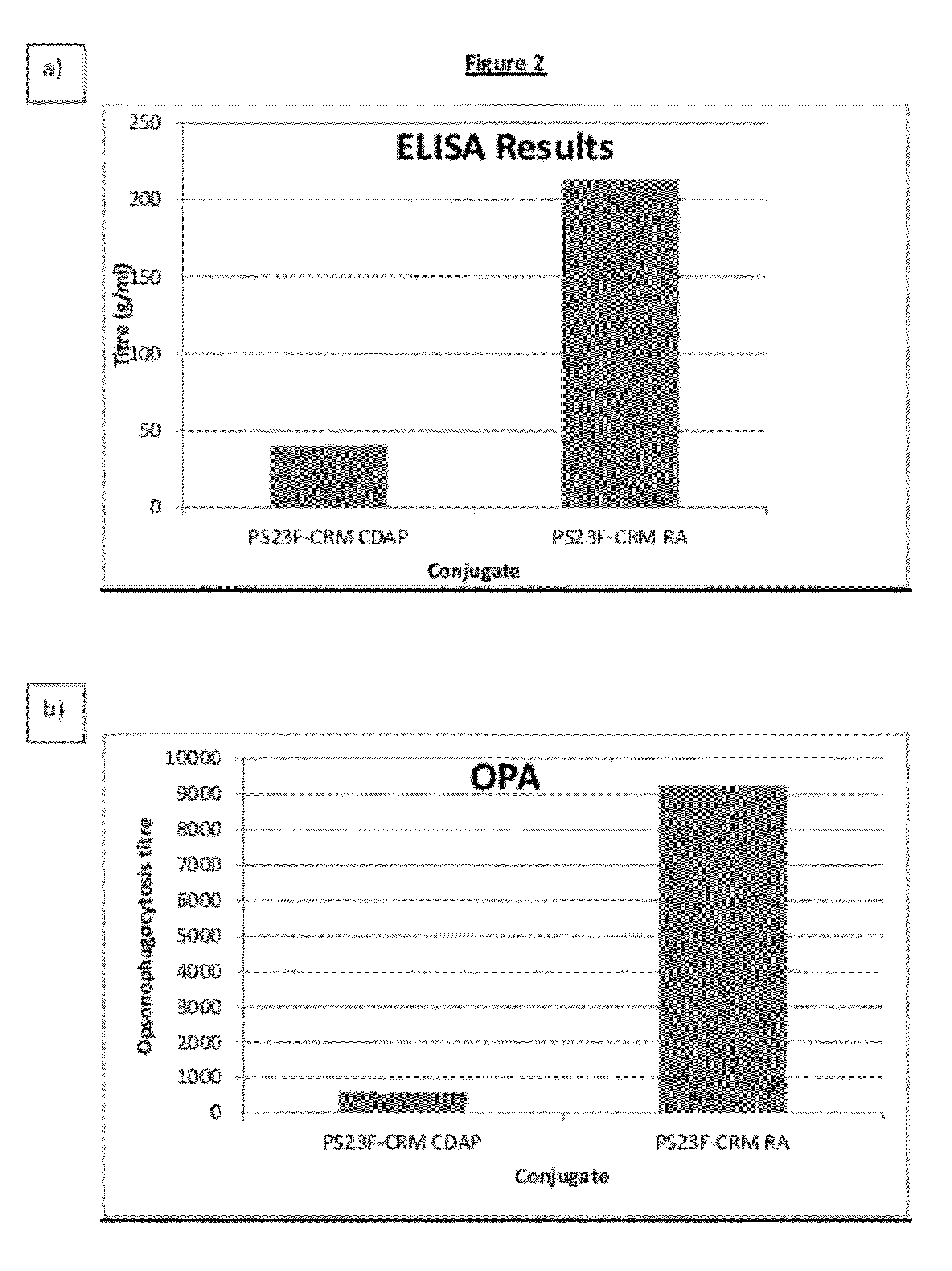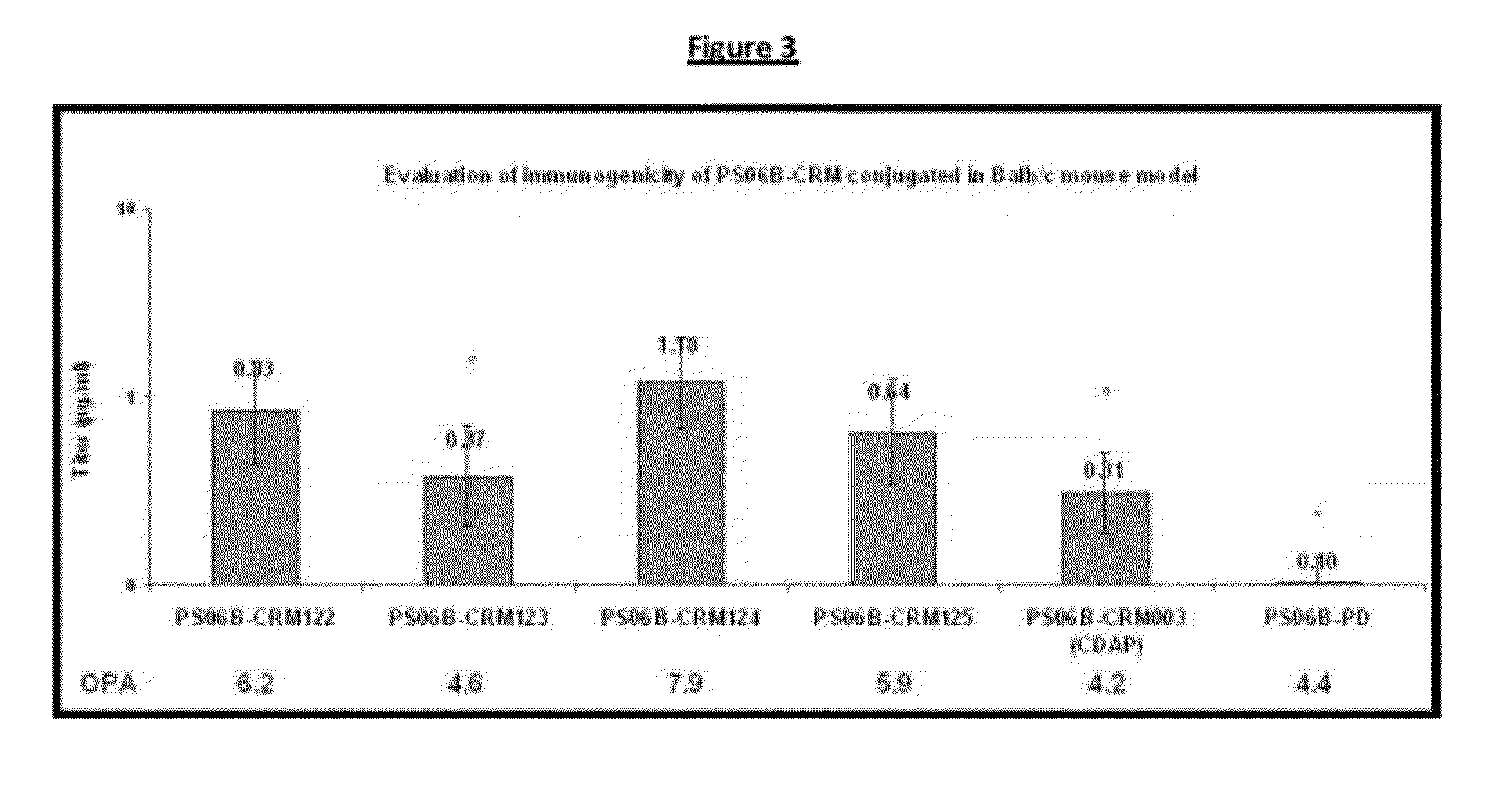Conjugation process of bacterial polysaccharides to carrier proteins
a technology of carrier proteins and polysaccharides, which is applied in the field of conjugation process of bacterial polysaccharides to carrier proteins, can solve the problems of t-independent immune response and poor immunogenicity of antigens in young children
- Summary
- Abstract
- Description
- Claims
- Application Information
AI Technical Summary
Benefits of technology
Problems solved by technology
Method used
Image
Examples
example 1
Oxidation of 23F and 6B Using Periodate
[0123]Polysaccharides (PS) 23F or 6B were dissolved in 100 mM KH2PO4 (pH 7.4), 10 mM KH2PO4 or WFI, to form solutions of 2 mg PS / ml. The solution was incubated for 2 hours under agitation at room temperature. After this time the pH was adjusted to pH 6.0 with 1 NHCl. Periodate was added as a powder or in liquid form (10 mg / ml in WFI) in various amounts to achieve a range of molar ratios (table 1). The solutions were incubated for 17 hours at room temperature (20-25° C.), after which time the samples were dialyzed or diafiltered against WFI.
[0124]High performance gel filtration chromatography coupled with refractive index and multiangle laser lights scattering (MALLS-) detectors was used to measure the molecular weight. Size exclusion media (TSK5000PWXL-Tosoh) was used to profile the molecular size distribution of the polysaccharide (elution 0.5ml / min in NaCl 0.2M-NaN3 0.02%).
[0125]Table 1 and FIG. 1 describe the results of these experiments. Th...
example 2
Conjugation of 23F to CRM197 Using Reductive Amination and CDAP Chemistry
[0127]1 g of PS23F was dissolved in 500 ml of 10 mM KH2PO4, pH 7.15. This solution was incubated at room temperature for two hours. The pH was adjusted to 6.0N with 1M HCl. 111 mg of periodate (NaIO4, 0.4 molar equivalents of periodate) was added to the PS23F solution, and the solution was incubated for 17 hours in the dark at room temperature to oxidise PS23F. The solution was then diafiltered against WFI.
[0128]The activated PS23F was lyophilised with the CRM197 protein (at a CRM / PS ratio (w / w): 0.625) in the presence of a stabilising agent.
[0129]900 mg of the lyophilised PS23F / CRM197 mixture was solubilised by addition of 350 ml of DMSO solvent and incubating for 2 hours at room temperature. To reduce the PS23F / CRM197 mixture 1 molar equivalent of NaBH3CN was added (735 μl of a solution of 100 mg / ml in WFI). The solution was incubated for a further 40 hours room temperature (15° C.-25° C.) ...
example 3
Immunogenicity of 23F-CRM197 Conjugates Made by Reductive Amination and CDAP Chemistry
[0135]Conjugates were made using the methods described in example 2. Female guinea pigs were immunized intramuscularly three times (at days 0, 14 and 28) with 0.25 μg of the PS23F-CRM197 conjugates. Animals were bled on day 42 and the antibody response directed against PS23F was measured by ELISA and OPA.
ELISA
[0136]Microplates were coated with purified pneumococcal polysaccharide in PBS buffer. The plates were washed four times with 0.9% NaCl and 0.05% Tween 20. Sera were incubated for 1 hour at 37° C. with CPS (V / V) in PBS 0.05% Tween 20. Sera were added to the microwells and serially diluted (two-fold dilution step) in PBS-0.05% Tween. The plates were incubated under agitation for 30 minutes at room temperature. The plates were washed as above and an anti-guinea pig IgG antibodies peroxydase conjugate was added, the plates were then incubated for 30 minutes at RT. After washing, the substrate (4 ...
PUM
| Property | Measurement | Unit |
|---|---|---|
| average molecular weight | aaaaa | aaaaa |
| average molecular weight | aaaaa | aaaaa |
| Mw | aaaaa | aaaaa |
Abstract
Description
Claims
Application Information
 Login to View More
Login to View More - R&D
- Intellectual Property
- Life Sciences
- Materials
- Tech Scout
- Unparalleled Data Quality
- Higher Quality Content
- 60% Fewer Hallucinations
Browse by: Latest US Patents, China's latest patents, Technical Efficacy Thesaurus, Application Domain, Technology Topic, Popular Technical Reports.
© 2025 PatSnap. All rights reserved.Legal|Privacy policy|Modern Slavery Act Transparency Statement|Sitemap|About US| Contact US: help@patsnap.com



